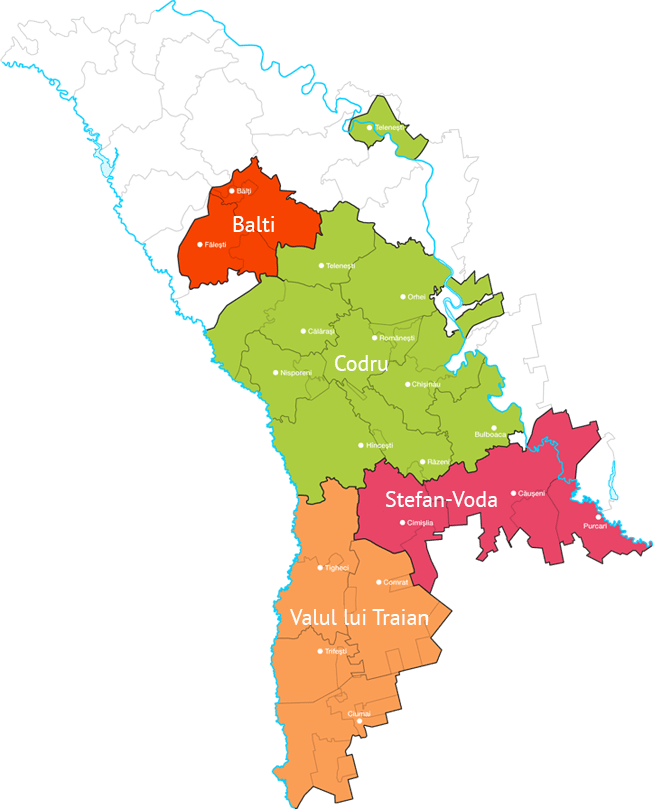Moldova’s Annual October National Wine Festival
Planning for the 19th annual Moldova Wine Festival is still underway. To find out the latest, visit the Festival’s official website.
Scheduled for the week of October 2 to October 5, this year’s festivities will have a virtual component, similar to last year, due to ongoing COVID-related precautions.
Celebrating Moldova’s grape harvest and long wine-making history, the October wine festival is one of the Moldova’s significant celebrations and popular tourist attractions.
Founded in 2002 in the capital city Chişinău, where most of the festivities occur, the Moldovan wine festival is about more than just wine. Woven into the fabric of the country, it is a showcase and celebration of Moldovan culture and tradition.
The History of Moldova’s Wine Industry
Moldova’s wine history dates back to the 14th century. In 1359, a resilient development of viticulture and wine production developed from the formation of a Feudal Moldavian state.
Wine production continued to flourish well into the 1400s. Eventually, it became one of Moldova’s chief exports, as well as the national drink. The top importers of Moldovan wine include Russia, Romania, Germany, China, and Italy.
Moldova’s annual wine production is an estimated 2 million hectoliters. It ranks as the eleventh largest wine-producing European country.
The three foremost regions of wine production in the country are Valul lui Traian, Stefan Voda, and Codru.

How Politics has Influenced Wine Production
- As a key economic driver, Moldova’s wine industry was fraught with political intrigue throughout the years.
- It began with the 1812 Treaty of Bucharest that made the country a province of the Russian Empire. This helped the wine industry flourish.
- Nearly a century later, both World Wars had significant negative impacts on the industry due to the destruction of many vineyards.
- The 1950s and 60s saw a resurgence of Moldovan wine success.
- And while the late 2000s has had challenges due to diplomatic conflicts with Russia, the industry is holding steady, registering a record year of sales in 2019.
Origins of the Wine Festival
Wine is so vital to Moldova because the grape is a treasured fruit and commodity in the country. Some even consider it a symbol of prosperity. There is also belief that the contours of the country’s borders resemble a bunch of grapes.
Some ancient traditions that accompanied wine-making in Moldova, include local wine owners offering their new wine to every passerby.
No passerby was allowed to refuse. The first passerby was to keep a sip of the wine in their mouth, remain silent and listen for whatever wish the wine had for its owner. That wish was then conveyed to the owner.
The Wine Festival takes place in October, as that marks the end of the wine harvest in Moldova. It’s also why the month of October is referred to as “bucket month” by Moldovans.
Today, the most prominent Moldova wine producers are the following wineries – Chateau Vartely, Cojusna, Cricova, Milishtii Mici, Branesti, and Purcari. Milishtii Mici, according to the Guinness World Records, owns the world’s largest wine collection, at two million bottles.
Moldova’s Modern National Wine Festival
The Moldova Wine Festival, which also includes the National Wine Day celebrations, was established with three goals in mind:
- Support local wine producers and strengthen national pride.
- Attract foreign visitors to Moldova
- Make Moldova into an international wine route.
Organized by the Ministry of Agriculture, the National Bureau of Grapes and Wine in association with various wine producers, the hope is that the wine festival not only fosters a local pride in Moldovan wine but creates a certain prestige around it.
What to Expect at the Wine Festival
There are multiple events throughout the Moldovan Wine Festival. Folktales, traditional food, wear, and dances, all accompany the week’s festivities.
Well… Wine
Naturally, the focus is on the wine. The first day of the festival commonly features a presentation from competing wine producers showcasing their product. The awards are presented the following day in a variety of categories.
There are seventy wine producers scheduled to attend this year’s festival.
As the entrance to the wine festival is free, it’s important to note that sampling the various wines is not.
Traditional Moldovan Food
Food, as previously noted, is a big part of the Moldova Wine Festival, with an entire area sectioned off as the designated eating area.
Various local meat and pastry dishes are sold, along with several locally grown fruits and vegetables.
If you want to ensure you’re not drinking on an empty stomach, there are plenty of opportunities to sample local Moldovan dishes.
Music and Dancing
The sights and sounds of the Moldova Wine Festival are just as appealing as the tastes and smells.
Tourists and first-time visitors get to experience the sounds of traditional Moldovan music and songs, with performances from local singers and dancers.
A common tradition at the festival is the circle dance that everyone is invited to join in.
Artisanal Goods
Another popular aspect of the wine festival is the various artisanal products available for sale.
Many tourists like to bring a traditional piece back from whatever country they’ve visited, as a souvenir. If you’re one of those who would rather not have to pay any incurred costs for alcohol, these artisanal pieces are an excellent compromise.
Popular items include clothing and accessories, as well as pots and wine flasks.
Come Join us in October!
The Moldova Wine Festival is a fun and exciting expression of Moldovan culture and a celebration of a core component of Moldovan life, that is, wine. It is a must experience for wine lovers and travel enthusiasts across the globe.
Join us on the English Moldova community forum to discuss and plan your visit to this year’s Wine Festival. Hope to see you there!
